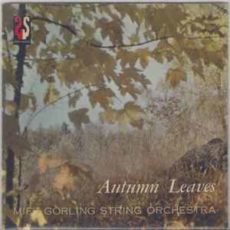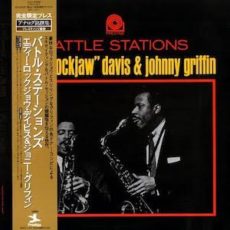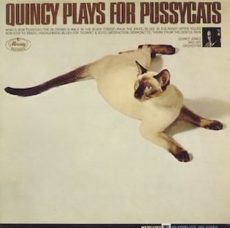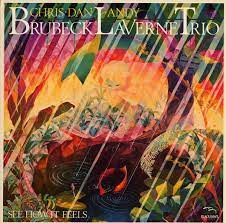
Daily Dose Of Jazz…
Miff Görling was born Uno Görling on March 21, 1909 in Stockholm, Sweden. He took his nickname from trombonist Miff Mole and got his start late in the 1920s with the Frank Vernon Orchestra, where he played until 1932.
He then worked with Arne Hülphers, Gösta Jonsson, Seymour Österwall, and Gösta Säfbom before organizing his own ensemble in 1938 and led bands well into the 1950s. He also did arrangement and composition work for other jazz groups as well as for popular Swedish musicians.
Bandleader, trombonist, arranger, and composer Miff Görling transitioned on February 24, 1988 in Stockholm.
More Posts: arranger,bandleader,composer,history,instrumental,jazz,music,trombone

Requisites
Battle Stations ~ Eddie “Lockjaw” Davis & Johnny Griffin | By Eddie Carter
It happened like this; that same night after I listened to The Happy Blues, I decided to turn up the heat with my next selection. That’s what prompted this morning’s choice from the library by tenor saxophonists, Eddie “Lockjaw” Davis and Johnny Griffin. Battle Stations (Prestige PRLP 7282/PRST 7282), hit the stores in 1963 and both horns are anchored by a smokin’ rhythm section, Norman Simmons on piano, Vic Sproles on bass, and Ben Riley on drums. My copy used in this report is the 1993 Japanese Mono reissue (Prestige VIJJ-30008 – PRLP 7282) by Victor Musical Industries.
Side One takes off at a fast clip on What’s Happening by Fletcher Henderson. The quintet speeds through the melody collectively, then Eddie erupts into an energetic opening statement. Norman steps up next with a spirited performance, then Johnny wails for a bit on the third reading. Both saxes move with considerable agility on a vigorous exchange into the quintet’s speedy ending. Abundance by Norman Connors slows the group’s pace just a few notches with a soulful melody in unison. “Lockjaw” goes first and gives a charming performance. Connors takes the reins next for an easy, flowing solo and Griff extends the mood on the finale with a satisfying statement succeeded by the ensemble’s reprise and climax.
If I Had You by Jimmy Campbell, Reginald Connelly and Ted Shapiro is up next. “Lockjaw” leads the rhythm section at a relaxing tempo on the melody and exhibits a simple beauty in the opening chorus. Norman is simply enchanting on the second reading. Johnny adds a delightful depth of emotion to the closing solo complemented by Vic and Ben’s supplement. Johnny Griffin’s 63rd Street Theme begins Side Two at mid tempo with a Latin flavor established by the rhythm section’s introduction and ensemble’s opening chorus. Davis approaches the lead solo with unhurried pacing and inspired lines. Connors packs plenty of feeling into the second presentation, then Griff is very smooth on the closing statement preceding the finale.
Pull My Coat by Richard Evans is a blues that comes to life with a brief bass introduction by Vic preceding the ensemble’s collective theme. Eddie opens anchored by just bass and drums, segueing into a splendid performance with full rhythm. Norman moves leisurely into the second solo with some down-home cooking. Johnny serves some succulent soul food on the closer. The quintet ends the set with a fun original by Babs Gonzales and James Moody, Hey Jim! Connors and the rhythm section opens with a happy introduction that grows into the ensemble’s unison theme. “Lockjaw” gives the first solo some swinging excitement, then Connors rises to the occasion on the second solo. Griffin follows with a perfectly executed statement, then both horns share a final exchange ahead of the group’s exit.
Battle Stations was produced by Esmond Edwards and Rudy Van Gelder was the man behind the dials of the original album. Victor Musical Industries has done a very good job with the remastering of this reissue. The album has an exquisite soundstage through the treble, midrange, and bass that’s excellent. Griff and “Lockjaw” were brilliant when working together and they’ve recorded several great studio and live albums. If you’re in the mood for some swinging Hard-Bop and are a fan of Eddie “Lockjaw” Davis and Johnny Griffin, I invite you to audition Battle Stations for a spot in your jazz library. It’s forty-two minutes of great music from one of the great tenor sax partnerships that’s sure to become one of your favorites!
~ If I Had You – Source: JazzStandards.com © 2022 by Edward Thomas Carter
More Posts: choice,classic,collectible,collector,history,instrumental,jazz,music,saxophone

Daily Dose Of Jazz…
Santo J. “Sonny” Russo was born on March 20, 1929 in New York City, New York and grew up in a musical family, both his father and grandfather were professional horn players. He first played piano and violin, and played with his father’s group at age 15, before settling on the trombone.
The consummate sideman, through the late Forties he started out playing with Buddy Morrow in 1947, Lee Castle in 1948, Sam Donahue in 1949, and Artie Shaw in 1949–50. The 1950s saw him performing with Art Mooney, Tito Puente, Jerry Wald, Tommy Tucker, Buddy Rich, Ralph Flanagan, the Sauter-Finegan Orchestra, Neal Hefti, Jimmy Dorsey, Tommy Dorsey, and Maynard Ferguson.
For a short period during the mid-1950s Russo found work in the bands of various Broadway shows, then in the late 1950s and 1960s he worked with Louie Bellson, Machito, Bobby Hackett, Benny Goodman, and Doc Severinsen. From 1969to 1972 he was a member of The Tonight Show orchestra, and he worked with Frank Sinatra from 1967 to 1988.
He played on Urbie Green’s 21 Trombones, soloed on numerous others, and toured with The World’s Greatest Jazz Band. Sonny recorded extensively with Jimmy Rushing, Tony Bennett, Lena Horne, Perry Como, Dinah Washington, Liza Minnelli, Elvis Presley, Paul Anka, Ray Charles, Steve Lawrence, and Eydie Gorme. He performs on the soundtracks to the films The Godfather, The Godfather II, Goodfellas, and Sophie’s Choice, and in 1971 on The Tonight Show he shared the stage with Louis Armstrong, playing the solo on Someday You’ll Be Sorry.
A fixture in the recording studios for radio and television, he was a regular in the Orchestra for Jerry Lewis’s Muscular Dystrophy Telethon in New York City. Always in demand he continued to work with Lewis on his one-man show, toured around the world with Sinatra who announced his playing a trombone solo on the tune I’ve Got You Under My Skin.
He has also done many gigs with the likes of Al Cohn, Zoot Simms, Mousey Alexander, and Milt Hinton. Trombonist Sonny Russo, a graduate of the Manhattan School of Music, transitioned on February 23, 2013.
More Posts: history,instrumental,jazz,music,trombone

Daily Dose Of Jazz…
Christopher Brubeck was born on March 19, 1952 in Los Angeles, California to pianist and composer Dave Brubeck. By the age of twenty he was joining his father and brothers Darius and Daniel in The New Brubeck Quartet.
Having toured for about 30 years in a group called Triple Play, he joined with guitarist Joel Brown and singer and harmonica virtuoso Peter Madcat Ruth, and swung jazz Louisiana style. He was a member of New Heavenly Blue, Chris also participated and recorded as a keyboardist/trombonist/guitarist in 1970’s Educated Homegrown.
In 1999, Chris and his brother Daniel joined with other musicians to form The Brubeck Brothers Quartet, having previously partnered with Andy LaVerne and released a 1972 album, The Brubeck-LaVerne Trio. He has performed with Mike DeMicco and Chuck Lamb.
In 2003, Chris played his first Concerto for Bass Trombone and Orchestra with the Czech national Symphony Orchestra in Prague, Czech Republic. A year later, he composed his own concerto titled, The Prague Concerto for Bass Trombone and Orchestra. Many of his classical compositions still contain strong hints of the jazz influence of his father.
Grammy nominated electric bassist, bass trombonist and pianist Chris Brubeck continues to pursue his musical explorations.
More Posts: bandleader,bass,history,instrumental,jazz,music,piano,trombone

Daily Dose Of Jazz…
George Robert Orendorff was born on March 18, 1906 in Atlanta, Georgia but when he was nine years old his family moved to Chicago, Illinois. His early musical years were spent learning the guitar before picking up cornet and spending his high school days with fellow students Eddie South, Wallace Bishop and Lionel Hampton. He began his career at 17, playing in Chicago dance bands, one of them led by Detroit Shannon.
Following a 1925 tour with the Helen Dewey Show, the revue dumped him in Los Angeles, California where he played with Paul Howard from 1925 to 1930. He then played with Les Hite for most of the 1930s and recorded with Louis Armstrong from 1930 to 1931. In the 1940s he accompanied Ceele Burke, and after his WWII army service, he became a post officer and an official in the American Federation of Musicians. George also recorded on the West Coast Jazz and Rhythm and Blues scene and continued to play with Les Hite.
Later in his career he worked with Maxwell Davis, Ike Lloyd, and T-Bone Walker among others. Trumpeter George Orendorff transitioned on June 28, 1984 in Los Angeles.



